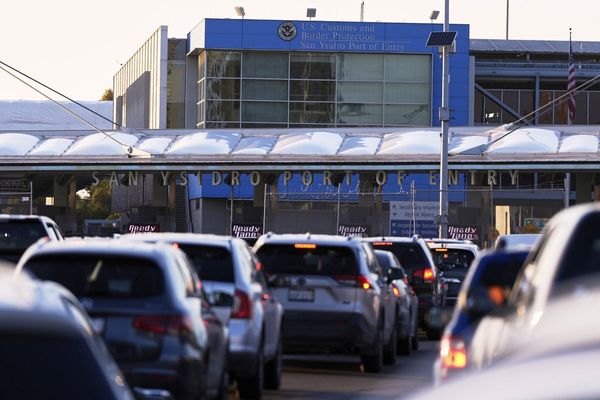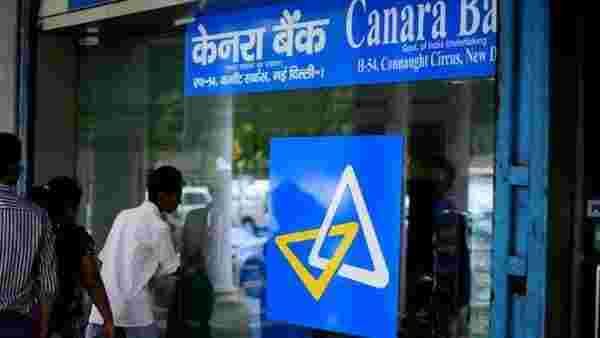
The tenure of his home loan had, without any communication from the bank, increased to 370 months from 273 earlier. Irshad took a loan of ₹47.6 lakh from a private bank. After paying an interest at 7.85% for two years, he took up an offer to pay ₹11,000 upfront to lower the rate to 7% in April this year.

However, the Reserve Bank of India (RBI), India’s central bank, raised the repo rate by 190 basis points between May and September. That immediately impacted all new retail loans.
Irshad’s bank decided to keep his equated monthly instalment (EMI) unchanged. Instead, the tenure was extended.
You might also like
Stocks might claw back as bears exit shorts
HUL is racing to outspeed B2B delivery firms
Why investors are flocking to consumer stocks
India's oldest ETF's journey to nearly 1 crore folios
“Now, I am trying to figure out what happened and why this was not communicated to me. I might have opted to pay a higher EMI instead of a longer tenure," Irshad, who works with a real estate company, said.
For an industry where loans are growing faster than one could imagine, Irshad is just one among the 13.5 million borrowers. Yes, he does feel deeply wronged. But could this be a sign of a market that is overheating? Of a growth-at-all-costs mindset that has little regard for processes?
Be it the larger metros or small towns, housing has become a market that never sleeps.
Armed with a liquidity slush and fewer avenues to deploy, banks sought out more and more home loan borrowers as the pandemic waves ebbed. And even though runaway price rise forced RBI’s hand, leading to four consecutive rate hikes in recent months, India’s home loan sector continues to traverse what is perhaps its most exciting phase.
Banks and non-banks are fiercely competing for a bigger share of the pie—each of them have their own value proposition. The market is also rife with teaser loans and innovation.
Home loans from banks stood at ₹17.86 trillion as on 26 August, growing 16.4% from the previous year and 6% from the start of the financial year.
The questions: what’s driving this insatiable demand, and is this exuberance irrational?
‘Enough momentum’
The aggressive push for mortgages by banks and non-banks seems to mirror the infrastructure lending euphoria that had once gripped the sector in the early and mid-2000s. Given that mortgage is a secured loan—backed by the house being used as collateral—they are now sanctioning loans like there is no tomorrow.
Lenders Mint spoke to said they see no change in demand after the rate hikes.
“So far, there is no sign that the customer demand is slowing after the rate hikes. I do not think the 50 bps (in September) will be the straw that breaks the camel’s back," said Jairam Sridharan, managing director of Piramal Capital and Housing Finance.
Piramal Capital, formerly Dewan Housing Finance Corp. Ltd (DHFL), focuses on the affordable housing segment.
Sridharan said there is enough momentum in the market. Housing demand, a metric on which the demand for home loans depends, is driven by the formation of new households post life events like marriage. Since a lot of these were on hold during the pandemic, there is a demand pull from that segment.
“Customers also seem to have enough real estate inventory to look at. The behaviour of customers has changed and they are not keen to buy early construction stage properties anymore," Sridharan added.
It takes six to nine months for an RBI rate hike and a subsequent lending rate hike to sink in, experts said. The customer would not immediately realize that the days of getting a home loan at 6.5-7% are over and that the new rates are near the psychological ceiling of 9-10%.
The excitement of the real estate and the financing industry also stems from the under-penetration of the Indian market when compared to other economies. Deepak Parekh, the chairman of mortgage lending behemoth Housing Development Finance Corp (HDFC), recently pointed out how at $300 billion, the mortgage to gross domestic product (GDP) ratio is just 11% of the gross domestic product. While he hopes it can double to $600 billion in the next five years, it would still be 13% of the GDP.
“When one looks at comparable Asian economies, the average mortgage to GDP ratios range between 20-30%. This implies that housing loans in India will have an exponential growth trajectory for decades to come," he wrote to shareholders in the bank’s 2021-22 annual report.
Two customers
With a share of 63% in 2021-22, banks continue to dominate the financing of homes, while the remaining pie belongs to housing finance companies (HFC), as per data from Care Ratings.
Experts said that while the level of competition has not drastically changed over the last couple of years, there is a clear demarcation between the customer categories that banks and HFCs lend to.
“Two distinct categories of customers have emerged in the home loan market. Firstly, prime market customers are being largely catered to by top private sector banks, some public sector banks, and large housing finance companies," said Ambuj Chandna, president of consumer assets at Kotak Mahindra Bank.
The prime market is price-sensitive and gets the lowest rate, Chandna added.
So, who do non-banks cater to?
“As you go down the value chain where you look at weaker properties, borrowers are willing to pay higher rates and that is the market tapped by non-bank players," he said.
Meanwhile, bankers said that while new loans are being disbursed, refinance formed a large component—until recently. Banks had dangled the carrot of lower EMIs to woo customers from other banks, especially from non-bank lenders.
Rates are no longer benign, thus slowing down balance transfers a bit. A banker with a mid-sized private bank said that the transfers have also slowed down because rates are changing quite often and customers are still weighing the pros and cons of shifting to another lender.
India’s largest lender, the State Bank of India (SBI), had offered home loans at 6.7% in September last year. Now, its rates begin at 8.55%. The ongoing upswing in the repo rate has forced other banks to raise rates as well. Kotak Mahindra Bank, a private lender that in September last year had one of the lowest rates in the industry of 6.5%, now has a starting card rate of 7.99%.
Teasers at work
Meanwhile, some large builders have stepped in with their own resources, allowing customers to avail of a loan even below RBI’s repo rate for the first couple of years. Tata Realty had, for a limited period, offered apartments at its projects for a startling 3.5% for the first year. Real estate experts said that this is a change from what used to be the norm. Large builders with the wherewithal to provide more attractive propositions are now offering such loan subventions.
How do these subventions work?
Often, the real estate company ties up with banks and pays the difference between the actual lending rate and their promised rate to ensure customers get cheap loans in the first year or two. An email sent to a Tata Realty spokesperson for details on the funding mechanism remained unanswered.
“Today, EMIs at the entry level is an issue with home loans. In the long run, everybody understands that interest rates will fall since the loans are typically for 15-20 years," said Niranjan Hiranandani, vice-chairman of the National Real Estate Development Council (Naredco), an industry body.
Hiranandani said that there may be some hesitation in the initial period to close a transaction and that is where the discounts come into play. He added that the industry is in discussion with banks and financial institutions to allow borrowers low rates in the initial years in exchange of longer tenures that can be adjusted later.
Other market watchers said that these subventions were a form of teaser loans. Teaser rates are used to price loans at a low fixed rate for the first few years—they significantly rise after that. The concern: borrowers might find it hard to service these loans when rates rise. In the past, the RBI has expressed its displeasure over such practices when SBI introduced such teaser rates a decade ago.
Home innovations
The home loan market was not always this exciting, and banks were hardly present four decades ago. This was a space dominated by the Life Insurance Corp. Of India (LIC).
The limited availability of bank finance for housing led to the formation of an RBI working group in May 1976. Headed by RC Shah, the then chairman of Bank of Baroda, the working group in its report on 25 January 1978 found that the involvement of commercial banks in housing finance was mainly by way of their investment in bonds and debentures of the Housing and Urban Development Corporation Limited (HUDCO), the State Housing Boards, and loans to their employees.
India’s home loan market has come a long way since. Now, India has a company that guarantees home loans.
Set up in 2014, privately-held India Mortgage Guarantee Corp is the first and only mortgage guarantee institution to be set up in the country since the RBI framed guidelines in 2008. The premise of this unique business is to guarantee borrower EMIs for a limited period to lenders. The borrower pays a fee for which he/she gets a higher loan, longer tenure, or even gets considered for a loan despite not having the preferred profile for that lender.
“We have guaranteed over ₹15,000 crore of home loans and 90% of those are in the affordable housing space of less than ₹30 lakh. The borrower pays an upfront fee of about 1.3% of the entire loan and gets upfront benefits," said Mahesh Misra, chief executive, India Mortgage Guarantee Corp.
If a home loan borrower turns non-performing, partnering lenders are assured two years’ worth of EMIs as the guarantee covers 20% of the loan. In those two years, lenders can take recourse to repossession of the house and may choose to sell the property to recover dues.
There are other innovations, of course. Banks and housing finance companies are partnering with nimble fintechs to do data analytics not just to identify the right customers but also to ensure that they get onboarded quickly. Driven by intense competition, public sector banks, especially SBI, have worked on reducing its turnaround time by using technology.
‘Concerns are overblown’
While bankers remain optimistic, a survey does reflect concern among potential homebuyers. According to a CII-Anarock consumer sentiment survey for April-September, 93% respondents said that there will be a high impact on their home buying decision if home loan rates breach the 9.5% mark.
What about those who have already availed loans? The fast growth of loans has raised eyebrows—borrowers will have to meet their repayment obligations in an environment where interest rates are set to rise even further. Soon enough, they will have to pay more.
Bankers know that it is easier to lend than to recover. However, lenders have a lot of faith in how homes are woven into India’s social fabric as a sentimental asset, making defaults something of a taboo. Some lenders said these concerns are overblown and it is almost impossible that a large section of home loan borrowers will default.
“Theoretically, it is possible—as rates go up, home loan default rates could increase and some borrowers might be unable to repay on time," an economist, who didn’t want to be identified, said.
“However, the mortgage market is well-regulated in India. Therefore, the country is unlikely to face a sub-prime crisis like the one US faced in 2008."
Elsewhere in Mint
In Opinion, Kaushik Basu explains the 'Incarceration Game' that helps authoritarian rulers stay in power. Will recovery in consumer demand hold? Niranjan Rajadhyaksha answers. Biju Dominic reveals an aspect of human nature than can power metaverse.










